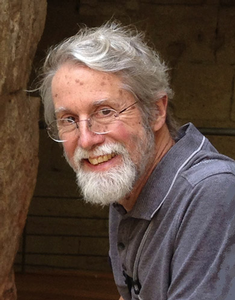AES New York 2019 Presenter or Author

David Griesinger
Primary Affiliation: David Griesinger Acoustics - Cambridge, MA, USA
AES Member Type: Life Member
Music was everywhere while I was growing up. Our suppers were accompanied by 78 rpm symphonies. I joined the local church choir at the age of eight. My father, a musician and businessman, bought a Brush Soundmirror, the first consumer tape recorder in the country. I loved recording family music playing. At the age of about twelve I made a tape recorder from motors and vacuum tubes. Later I made radios and transistor audio amplifiers. In high school I bought an “expensive” dynamic microphone and mono recorder to record our glee club, but the sound quality was disappointing. I solved the problem at Harvard by making condenser mikes in the Physics department machine shop. With them I recorded many concerts on a restored Ampex 15ips 10” recorder with solid-state electronics I designed. My first AES paper was on reducing tape distortion with power-law pre-distortion and cross-field bias. I sang first with the Harvard Glee Club, and then the University Choir and the Boston Camerata. In graduate school I met Harriet Griesinger, a physicist who has been my companion, helper and editor ever since. When I got my PhD degree I was already working on digital reverberation, and made a prototype 224 reverberator in 1977. This started a long career at Lexicon, where I developed many products, including the 224 and 480 reverberators, the LARES acoustic enhancement system, and the Logic 7 surround system. During this time I was also experimenting and writing about the perception of reflections and reverberation, both on recorded music and in live concerts. I found that they are beneficial only up to a certain level, which is often exceeded in halls and rooms. My current scientific work is developing models and measures that can explain why and where localization and proximity are lost due to excess reflections and reverberation. This loss of localization happens abruptly at a particular distance, which we call the Limit of Localization Distance (LLD). The LLD can be easily found by walking forward and back from the stage with eyes closed while musicians play. We have developed formulas that can predict where this change will occur from measured data, and give insight into how the venue can be improved. These measures, and the theories on which they are based, are being employed with success.
More Info: http://www.davidgriesinger.com
Session List
Oct 16:
P04: Room Acoustics (Chair)
Accurate Reproduction of Binaural Recordings through Individual Headphone Equalization and Time Domain Crosstalk Cancellation (Author)
Oct 19:
EB8: Applications in Audio
Individual Headphone Equalization at the Eardrum with New Apps for Computers and Cellphones (Author)
